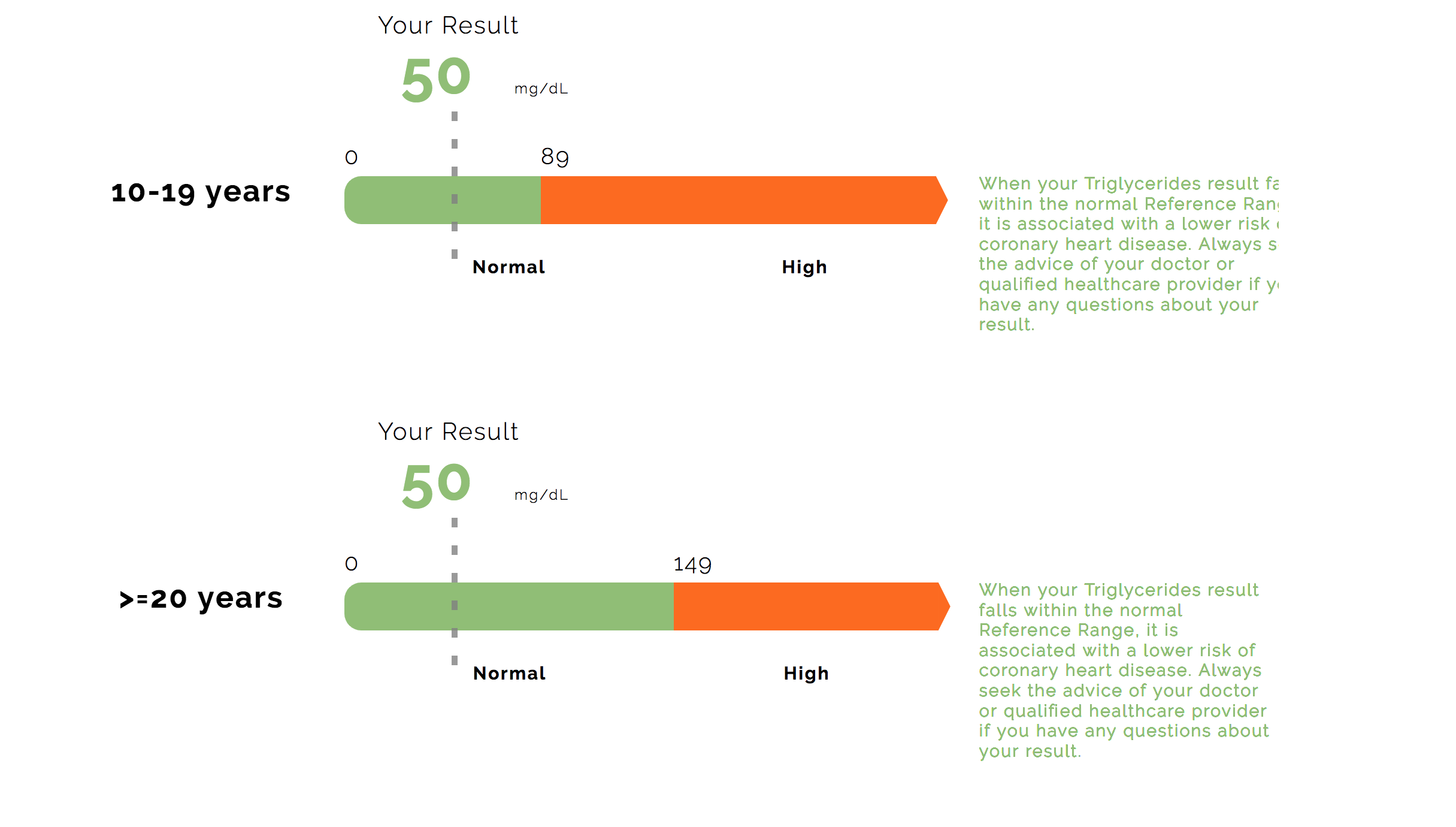What are Triglycerides?
Triglycerides are the chemical form of fats existing in food, as well as in the body. Calories that are not immediately needed by the body are converted into triglycerides and stored in the body’s fat cells for later use. Triglycerides combine with proteins to form particles called lipoproteins, that transport fat through the bloodstream. When energy is needed in a certain part of the body, lipoproteins carry triglycerides to that location. After use, lipoproteins also carry triglycerides to the liver, where they can be removed from the body.
How to Measure Your Triglycerides Level
The level of triglycerides in your bloodstream can indicate how effectively your body is processing the fat and carbohydrates (foods with high amounts of simple sugars) in your diet. Triglyceride results are best measured after fasting, so it is likely that you will not see a triglyceride measurement on your results report if you completed a non-fasting screening. It is necessary to fast for 9 to 12 hours prior to your screening to receive a meaningful triglyceride result.
Triglycerides will be measured in milligrams per deciliter of blood (mg/dL). A healthy triglyceride range is less than or equal to 150 mg/dL. High triglyceride levels (over 150 mg/dL) can indicate an increased risk of heart disease, especially when combined with high LDL (“bad”) cholesterol and/or low HDL (“good”) cholesterol levels.
Nutrition and Triglycerides
Reducing the amount of carbohydrates you consume on a daily basis, as well as reducing your intake of foods high in saturated fat and trans fat, can help lower your triglyceride levels. The National Heart, Lung and Blood Institute suggests that consuming high amounts of carbohydrates (over 60% of daily calorie consumption) yields to a rise in triglycerides. Carbohydrate intakes should be limited to 60%of total daily calories, and lower intakes (50% of calories or less) should be considered if you have elevated triglycerides or low HDL (“good”) cholesterol.
Additionally, if a person has triglyceride levels outside the normal range, it is especially important to limit daily calories from added sugar to 5-10% of daily calorie consumption (no more than 100 calories for most women and no more than 150 calories per day for most men). Added sugars are sugars and syrups that are added to foods or beverages during processing or preparation. They do not include naturally occurring sugars such as those found in milk (lactose) and fruits (fructose).
If you have a high triglyceride result, work with your healthcare provider to monitor or limit your fructose intake, and eat more vegetables and fruits, which are lower in fructose.


